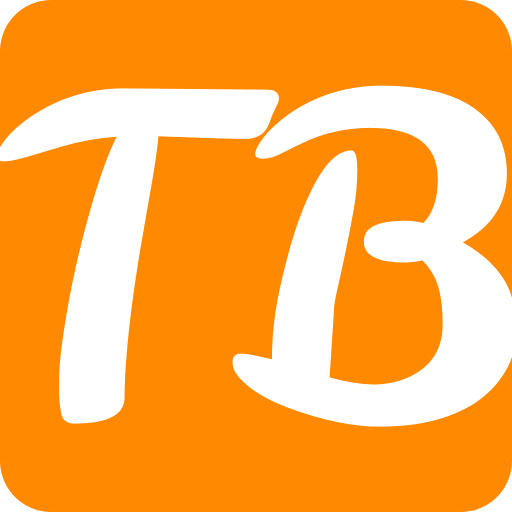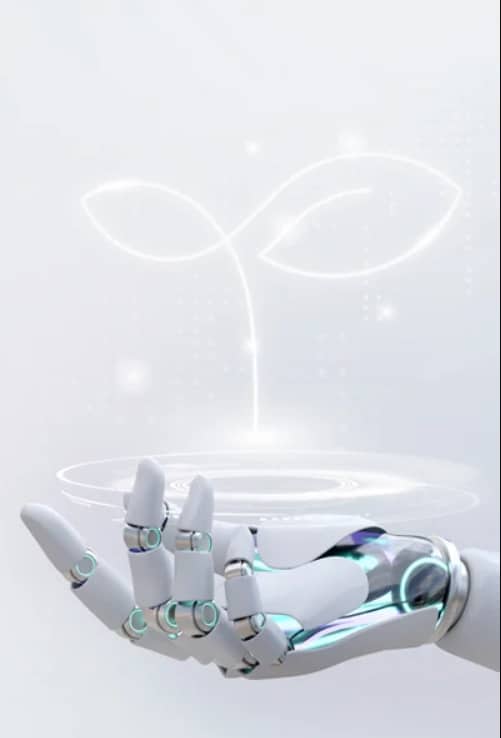The need for AI detectors has risen due to the development of artificial intelligence. Such tools are designed to recognize content that AI has generated.
This is important in many areas, including journalism, academic work, and digital media, where authenticity is key.
The ability to establish the origin of AI-generated text, pictures, or videos can be used against lies, plagiarism, and other types of fraud as they grow more complex each day.
In this article, we will discuss some great examples of such detectors available on the market now; we’ll also advise on how you should choose them and explain why they are so significant for trustworthiness in digital materials preservation.
Best AI Detectors Table
| AI Detector | Key Features |
|---|---|
| ContentAtScale | Advanced AI content generation, SEO optimization, bulk content creation, plagiarism checking. |
| OpenAI Text Classifier | AI-driven SEO analysis, keyword optimization, content scoring, and competitive analysis. |
| Grover | Fake news detection, large-scale text generation, article rewriting, contextual understanding. |
| Kazan SEO | AI-driven SEO analysis, keyword optimization, content scoring, competitive analysis. |
| Writer.com | Grammar checking, style improvement, plagiarism detection, collaborative writing tools. |
| PoemOfQuotes | Poetry and quote generation, thematic content creation, literary style adaptation, text analysis. |
| GPTZero | AI-generated content detection, text analysis, linguistic pattern identification, educational tools. |
| Draft & Goal | Content creation for sports, real-time data integration, sports analytics, dynamic storytelling. |
| Gltr.io | AI text authenticity verification, statistical analysis of text, pattern recognition, user-friendly interface. |
| Crossplag | Plagiarism detection across languages, cross-referencing databases, academic integrity tools. |
| Sapling.ai | AI-powered writing assistant, grammar and style checking, team collaboration features, API integration. |
| Originality.ai | AI-generated content detection, plagiarism checking, website content scanning, comprehensive reports. |
| CopyLeaks | Plagiarism detection, AI content recognition, educational and business solutions, detailed analytics. |
| DetectGPT Chrome Extension | Browser-based AI content detection, real-time analysis, easy integration with writing platforms. |
| GPTradar | Monitoring of GPT-generated content, trend analysis, content authenticity verification. |
| Willieai.com | AI writing assistant, content generation, SEO optimization, plagiarism checking. |
| ParaphrasingTool.ai | Text paraphrasing, content rewriting, synonym suggestions, multiple language support. |
| Hugging Face | NLP model repository, model training and deployment, community-driven development, API access. |
| On-Page.ai | On-page SEO analysis, content optimization, keyword research, competitive analysis tools. |
| CheckForAI | On-page SEO analysis, content optimization, keyword research, and competitive analysis tools. |
20 Best AI Detector
1. ContentAtScale
ContentAtScale is AI-powered software that can tell if a machine produced content. It does this through the use of complex algorithms that study patterns in language indicative of machine-based writing,g thus helping creators and businesses remain authentic and original.

This is especially useful in areas like journalism, academic publishing,g or digital marketing where the integrity of contents cannot be compromised.
ContentAtScale ensures that ethical standards are observed while safeguarding against potential risks associated with AI-generated content, thereby increasing the trustworthiness and credibility of such materials among users.
2. OpenAI Text Classifier
The OpenAI text classifier is a sturdy application designed to distinguish between human written texts and those generated by artificial intelligence.
The program achieves this by employing deep neural networks that detect certain stylistic aspects or features in language expressions as indicators for determining whether it was authored by a person or not.

Educators, publishers, and moderators who want to check for plagiarism will find this tool most helpful, among other things, too, because they can now easily weed out any content filled with copied work from their platforms, thus reducing cases of cheating among students significantly and promoting fairness in assessments across educational institutions globally.
Moreover, with an ability like never before seen in systems built around supervised learning techniques, we have made sure our model is capable enough even without being trained over examples showing different degrees of originality so far known but still able to recognize them when encountered during the testing phase.
3. Grover
Grover is an AI model created by the Allen Institute for Artificial Intelligence (AI2),, mainly used for detecting fake news articles. It also can generate such materials if necessary.

It applies advanced machine learning methods combined with natural language processing algorithms, which enable it to analyze various components like sentence structure, vocabulary choice, etcetera within texts, thereby distinguishing between genuine journalistic pieces from fabricated ones produced entirely using computers or other automated systems.
4. Kazan SEO
Kazan SEO is a tool for AI detection created specifically for the SEO industry; it aims at verifying the genuineness and quality of web content.
Digital marketers and content developers can know whether a piece of text has been generated by an AI or not through Kazan SEO, thus enabling them to create unique and interesting articles that are also search-engine friendly.

The software provides tips on how users can optimize their content strategies, avoid getting penalized for creating content using artificial intelligence systems, and improve their website’s search rankings and performance. Therefore, in digital marketing, there is no substitute for being real.
5. Writer.com
The tool offered by Writer.com detects AI integration with its wider suite of content production tools. It helps businesses and content teams ensure that what they write remains original while sticking to brand rules.

Businesses can maintain one voice across different channels by identifying where machine-generated texts have found their way into internal memos or customer-facing messages, among others, through Writer.com’s detection capabilities around such forms of communications, thus preserving authenticity along all lines.
6. PoemOfQuotes
PoemOfQuotes has come up with an AI-detecting software that mainly targets poetry and quotes within literary circles.
It scans texts, looking at stylistic features alongside subjects covered so as to determine if they were composed by humans or machines.

This invention best serves those involved in studying literature either professionally or passionately because it ensures that creative works are always authentic; therefore, nobody should ever doubt who wrote a certain poem or line from now on.
7. GPTZero
GPTZero is an AI detection tool that specifically pinpoints whether texts have been generated using GPT-3 or GPT-4 models.
Coherence and linguistic patterns, among other textual elements, are examined by GPTZero to differentiate between what has been written by humans and what has been produced by machines.

This is very important for institutions of learning at different levels, publishers dealing with vast amounts of digital materials required for publication purposes, and those involved with the creation process itself since they need to ensure originality in their works always.
8. Draft & Goal
Draft and Goal is an AI detection tool created for the sports industry to verify whether sports content is genuine or not. It does this by checking through articles, reports, and other write-ups to see if they have been generated using artificial intelligence.
This is very important for sports journalists, analysts, and content creators who want their work to be original and reliable as well.

Draft & Goal ensures that good journalism or any other form of creative writing in the field of sports does not die out; hence, building trust between readers of sports news stories and real-life events is also covered in media houses around the world.
9. Gltr.io
GLTR.io (Giant Language Model Test Room) is an artificial intelligence detection tool that visually detects AI-generated text.
It works by showing words and phrases statistically more likely generated by AI, according to researchers at MIT-IBM Watson AI Lab together with Harvard NLP, among others who developed it.
Educators would find such a tool useful when they need to check whether machines wrote their students’ texts or not.
At the same time, journalists may use this service during investigations into some stories where there might be suspicion about automated reporting systems being used.
10. Crossplag
Crossplag is one among many advanced plagiarism checkers designed especially for detecting copying across domains and determining the presence of AIs behind the creation of those copies.
It achieves this feat by comparing texts with a large number of sources stored within its database, thus finding similarities between them, which could indicate usage by bots or other programs utilizing machine learning algorithms.

Academic institutions might need tools like Crossplag because they frequently face issues related to intellectual dishonesty, like students submitting someone else’s work as their own, hence compromising ethics in education institutions.
Publishers, too, can benefit from such software since it helps them ensure the authenticity of what gets published under various names.
At the same time, content creators may find this useful when they want to make sure no other person has written the same thing before.
11. Sapling.ai
Sapling.ai is an assistant to writing based on AI that has been developed in order to increase efficiency and enhance the quality of written communication. Sapling also includes a detection tool that identifies content generated by AI.

This feature allows companies and content creators to ensure the authenticity of their communications, such as emails, customer service interactions, or marketing materials.
In addition, sapling.ai differentiates between human and machine-generated text, which significantly contributes to maintaining high standards for the integrity of content, therefore cultivating trustworthiness and credibility within professional communications.
12. Originality.ai
Originality.ai is a holistic solution for detecting plagiarism and originality in content created by humans only (as opposed to machines).
It serves publishers, educators, and marketers who need assurance that their texts are authentic compositions that are not produced using artificial intelligence systems. This software utilizes algorithms with advanced capabilities.

This enables it to scan through texts looking for indications revealing the involvement of AI tools as well as checking across internet pages where similar phrases might have been copied verbatim or slightly paraphrased, thereby setting out comprehensive reports on such cases together with necessary recommendations aimed at upholding ethical standards while enhancing trustworthiness through credibility enhancement points related towards this matter thus making sure that information has been authenticated.
13. CopyLeaks
CopyLeaks provides an excellent means of identifying both plagiarism and AI-generated content. The tool uses intricate algorithms that determine whether a given text is original or not, making it ideal for teachers, publishers, and businesses concerned about the authenticity of their works.

Users can refer to detailed reports provided by CopyLeaks highlighting instances where duplication may have occurred alongside those involving the use of machine learning algorithms during creation stages, thus helping them keep up high levels of integrity within the originality standards required, especially when dealing with academic materials where students’ honesty needs to be upheld at all time.
14.DetectGPT Chrome Extension
The DetectGPT Chrome Extension is a convenient tool that allows users to detect AI-generated content directly within their web browsers.
The extension uses advanced machine learning models in order to analyze text present on web pages and determine whether an AI has created it or not.

DetectGPT provides an easy way of verifying the authenticity of content in real-time for journalists, researchers, and teachers, among others, who may find themselves needing such services urgently at any given point.
15. GPTradar
GPTradar is a tool that detects artificial intelligence text. The AI analyses and identifies patterns in the language used as well as other textual characteristics to distinguish between human written texts and those generated by AI models such as GPTs.

This is very important for people involved in creating content, teachers or lecturers, and online marketers who would like to protect their work from duplication or plagiarism.
The robustness of detection helps prevent the misuse of artificial intelligence in generating content, thus upholding the ethics and credibility of written materials.
16. Willieai.com
Willieai.com is a platform that has come up with an advanced system for checking whether the words used have been copied or not. It does this by using complex algorithms which are designed to detect any text produced by artificial intelligence programs.
They also provide users with detailed reports on what part was plagiarized and how it could be improved so that it becomes unique again.
This service can greatly benefit teachers, business owners, or managers who want originality checks done quickly without wasting much time thinking about what they should do next.
Willieai.com ensures that people keep their work honest while not falling into traps set by automated systems that generate fake content.
17. ParaphrasingTool.ai
ParaphrasingTool.ai offers a two-in-one solution for rewriting sentences as well as identifying machine generated texts.
Such functionality makes it perfect for authors, educators, bloggers, or anyone else who wants their articles to look natural but still needs them checked against being duplicated elsewhere online (even if accidentally).

With this feature, you can easily spot phrases or paragraphs that might have been composed using artificial intelligence so that you replace them with your own words, thus maintaining authenticity throughout the document without raising suspicion among readers about possible copyright infringement issues involved here.
18. Hugging Face
Hugging Face is a known organization that deals with AI and natural language processing. They have many models to analyze texts, including the ability to detect if an AI wrote it.
Hugging Face detection tools are designed based on the latest machine learning technology. Therefore, any content generated through artificial intelligence can be accurately identified.

These resources can be very helpful for researchers, developers, or creators who want their work to be authentic and unique.
The wide range of AI tools provided by Hugging Face also helps maintain quality standards during the content creation process and its evaluation.
19. On-Page.ai
This AI-based software is aimed at optimizing web pages for search engines and has a feature that detects whether there is any piece of text that has been published automatically.
On-Page.ai checks the originality of digital marketing materials so that they comply with search engine guidelines while still being unique among other similar sites within the same niche.

It helps improve rankings by ensuring no penalty is caused by using autogenerated content, which could reduce visibility among top page results on SERPs, thus lowering credibility levels, too. On-PagegeAIi SupportHigh-Qualityty Original Content Creation That Enhances Website Visibility And Credibility.
20. Percent Human
Percentage Human is an AI detection tool that estimates the chances of a text being written by a human as opposed to an AI.

By looking at language patterns, word usage, and style elements using complex machine learning algorithms, it gives a score as a percentage, which reflects how likely it is for the document to have been authored by humans.
This software is useful for teachers, editors, and creators who want to ensure authenticity and originality in their work. It provides an easily understood measurement of personhood in writing so that what gets produced can remain credible even while being honest about its sources.
Conclusion
The bottom line is that these days, AI detectors are essential for ensuring the authenticity of digital content. By looking into accuracy, ease of use, compatibility, and costs involved, one can select the most appropriate detector depending on their specific needs.
These tools serve different sectors by distinguishing between content created by humans and content generated through artificial intelligence, thus upholding trustworthiness in various areas.
Also, as technology advances, so does the sophistication level of AI systems, making detection even harder, hence necessitating reliance on more sophisticated software like never before seen in the history of humanity so far!!!
Therefore, my dear reader, I, at this moment, declare, without any fear or favor, that such an investment should be considered mandatory for all educators, journalists, or anyone interested in the genuine information dissemination process.
In order to keep pace with this ever-evolving world full of fake news stories designed solely for personal gains at the expense of unsuspecting members of the public who rely upon accurate & credible reports, it’s high time we equipped ourselves with only the best available resources that can help us combat against such malicious activities perpetrated using computers as tools instead human beings themselves!!!









